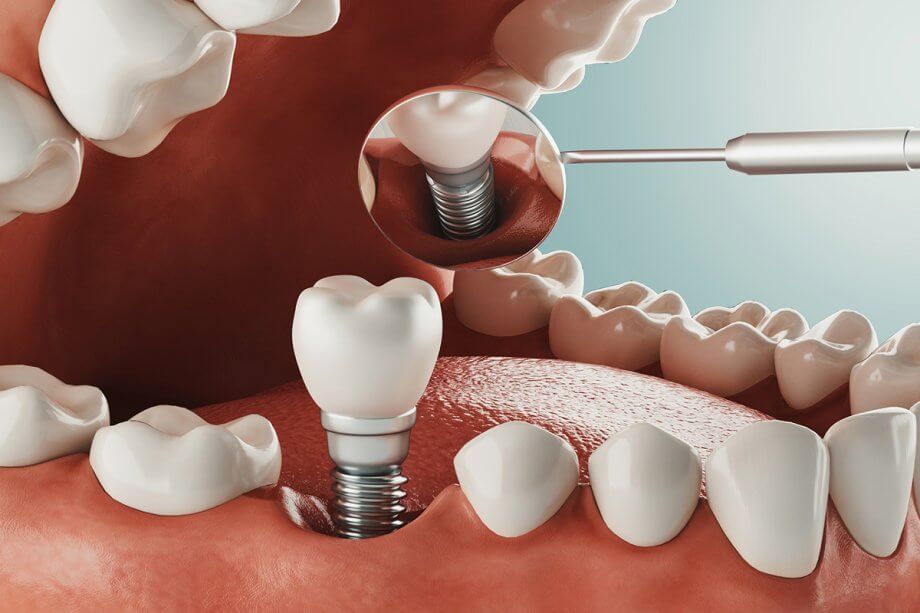Are you planning to get one or more dental implants? Even if you’re just considering this option, you are wise to learn everything you can about it in order to make an informed decision. Get an overview of the most advanced technology in tooth replacement from A Patient’s Guide to the Dental Implant Procedure.
What Are Dental Implants?
A dental implant is an artificial tooth and root system. The implant itself is a titanium post that is shaped like a screw with threads to help it fuse with the jaw bone. It is surgically placed in your jaw where a natural tooth root is missing. Once it bonds with the bone it is strong enough to support an artificial tooth (crown). One implant can replace a single tooth. Multiple implants can support a bridge or dentures to replace two or more teeth.
Dental Implant Placement
The placement of a dental implant is a surgical procedure because it requires manipulation of tissues to access the bone under the gums. Local anesthesia is used to numb the nerves in the area where the implant will be placed to ensure your comfort. The gum tissue is opened, the implant is carefully and precisely placed in the jaw, then the gum tissue is closed over it. This allows the tissue to heal and the implant to fuse with the bone.
Adding the Abutment
A few months after the placement of the implant in the jaw, once it has had time to bond securely to the bone, the abutment can be added. This is the attachment that connects the implant to the prosthetic.
Attaching the Dental Prosthetic
Once the gum tissue has had time to heal after the abutment was added, usually in 2-3 weeks, the permanent dental prosthetic can be attached. This may be a crown, bridge, or dentures depending on the number of teeth you need to have replaced. Once your prosthetic has been placed your restoration is complete.
Technology in Dental Implant Placement
Dental implants themselves are a technological innovation, but advancements in technology have improved the placement of dental implants as well. The X-Guide Navigation System uses digital images of your mouth to create a virtual procedure that is used to guide the actual procedure. This helps to ensure accuracy and precision for more successful outcomes in dental implant restorations.
Patient Comfort
In many cases dental implants can be placed using local anesthesia. However, in certain cases sedation can be a helpful tool to ensure patient comfort. If you are nervous or anxious about the procedure, sedation can help you relax. For patients who are receiving full mouth restorations, sedation is typically recommended since the procedure is lengthy. Nitrous oxide, conscious oral sedation, or IV sedation are typically sufficient. General anesthesia is not typically recommended or required for dental implant placement.
Frequently Asked Questions About Dental Implants
Are dental implants covered by insurance?
Dental insurance providers are covering dental implants more now than before. It may be a procedure that requires a higher tier or premium plan, depending on what your employer or provider offers. Contact your insurance provider or refer to your benefits guide for more information.
How can I afford dental implants?
Whether or not you have insurance coverage for dental implants, you will still have some out of pocket cost. HSA and FSA accounts are eligible to use for dental implants. Financing is also available to divide the cost into affordable monthly payments.
Why Choose Rio Grande Oral Surgery?
Dental implant placement is a surgical procedure, which means an oral surgeon is the most qualified professional to perform it. Rio Grande Oral Surgery specializes in dental implant placement. We are fully equipped with the latest technology to place dental implants accurately and comfortably.
If you’re considering dental implants, call 505-821-2111 or contact us today to learn more and schedule a consultation.

